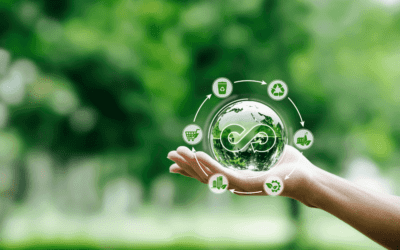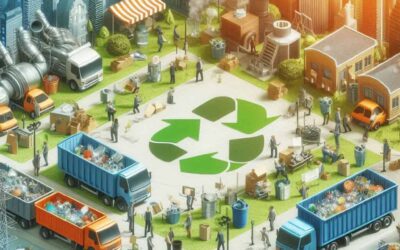Those of us who are genuinely concerned about the impacts of climate change and the future of the planet understand that we can’t even contemplate reaching Net Zero without accelerating the conversations we have about waste.
Waste is a huge producer of methane gas. In 2022, US-based National Public Radio (NPR) reported that satellite data from just four major cities – Delhi, Mumbai, Lahore and Buenos Aires – showed that emissions from landfills were up to 2.6 times higher than earlier estimates. The report said that scientists estimate that at least 25% of today’s climate warming is driven by methane generated by human actions. A high proportion of that percentage is accounted for by the way we manage waste around the world.
The problem with waste
We know there’s a problem with waste – we are creating and using more products than we need. This means a worldwide problem with general plastic waste alone – not even considering the waste generated by manufacturing processes across all industries.
And it’s not just about how much waste we generate – it’s about what we do with it. When waste is left in landfill, it creates methane gas. Methane is the most potent greenhouse gas – more than 80 times more powerful than CO2 over a 20-year period. And a significant amount of the methane released into our atmosphere comes from landfill.
Countries that incinerate waste rather than send it to landfill release less methane gas into the atmosphere – but they are then releasing other potentially harmful substances. There is no good way to get rid of much of the waste we create. So the only answer is to reduce what we use, reuse what we can, recycle wherever possible and only throw away as a last resort.
How are we doing?
According to the World Bank, at least a third of the world’s waste is managed in an environmentally-poor manner. In its report, Trends in Solid Waste Management, the World Bank also says that high-income countries generate around 34% of the world’s waste, despite accounting for just 16% of its population.
The report suggests that the amount of waste generated, and the ways that waste is managed, are very different between countries:
“Daily per capita waste generation in high-income countries is projected to increase by 19% by 2050, compared to low- and middle-income countries where it is expected to increase by approximately 40% or more.”
“Waste collection is a critical step in managing waste, yet rates vary largely by income levels, with upper-middle- and high-income countries providing nearly universal waste collection. Low-income countries collect about 48% of waste in cities, but this proportion drops drastically to 26% outside of urban areas. Across regions, Sub-Saharan Africa collects about 44% of waste while Europe and Central Asia and North America collect at least 90 per cent of waste.”
So we can see that the amount of waste we produce is increasing year-on-year, which is unsurprising given a consumer-led society and overall population growth. But we can also see that the amount of waste collected and recycled is also increasing. The question is whether improvements are moving fast enough and with enough urgency to significantly reduce the impact that waste has on the climate emergency.
Not sexy, but essential
It’s easy to see why people concentrate on adopting new technologies and being distracted by ‘shiny things’. Of course, electric vehicles, hydrogen fuel and solar panels have a role to play in reducing our use of fossil fuels and in turn reducing greenhouse gas emissions. But these activities also all produce waste, and we need to consider what happens to the vehicles and technologies they are replacing, and how we will manage recycling, reusing or disposing of the hardware at the end of its life.
In fact, there’s no new process, technology or approach that shouldn’t involve waste as part of the conversation. RMI, an independent non-profit organisation working to accelerate the clean energy transition, wrote a report in 2023, focusing on the need for a circular battery economy – helping manufacturers to mitigate the issues associated with EV battery production, and ensuring that waste from the industry is kept to a minimum. The organisation calls for effective policy-making in this area, covering:
- Supply chain traceability
- Material transport and storage
- Improving manufacturing and production with intent to reuse and recycle
- Increasing battery recycling
- Upgrading old batteries for reuse
According to the RMI report, “the extraction and reuse of battery materials in another product, including another battery — has the potential to reduce the demand for raw minerals by up to 64 percent by 2050. Recycled battery scrap — the residual materials discarded during battery production — alone can serve as critical input material, reducing the need for virgin critical minerals such as cobalt and nickel.
Improving our attitude to waste
Failing to manage our waste properly harms the environment. It pollutes the air, the soil and the water, with significant knock-on effects to our health, the planet and our future. Good waste management often takes a back seat because it is deemed to be expensive – but it’s clear to see that waste and recycling management is an investment, not a cost. If we don’t start taking it seriously, our chances of reaching Net Zero could just be zero.
To find out more, contact our team today or visit our WR1 showcase below.






